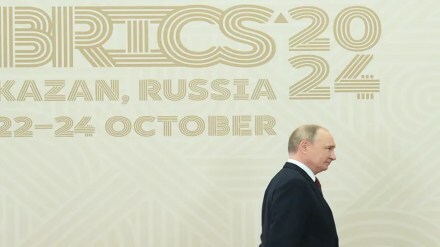The 16th BRICS summit in Kazan, the first get-together of the grouping with four new members — Egypt, Ethiopia, the UAE, and Iran — has come a long way since this acronym became a buzzword 23 years ago after a Goldman Sachs economist highlighted Brazil, Russia, India, and China’s prospects as major world players. South Africa joined the grouping in 2010. The western media considers this grouping of mid-sized economies as a counterweight to US-led western influence and lacks cohesiveness to have geopolitical significance. This is far from true as 30-40 countries want to join the grouping. Thirty-six countries attended the Kazan summit, with more than 20 represented by heads of state. As for the expanded grouping’s geopolitical significance, its share of global GDP would rise to 26% this year from 8% in 2001, while that of the G7, a grouping of the richest advanced nations, declines to 45% from 65%. BRICS in all its summits from 2009 to 2024 has supported a multi-polar, equitable, and democratic world order, and has demanded a greater voice for the global South in institutions like the International Monetary Fund, World Bank, and United Nations.
While Russia’s war in Ukraine — and the growing ambit of sanctions against Moscow — and Sino-American tensions may lend impetus to moves to undermine US-led western influence and replace the US dollar, India does not necessarily share the stance of Moscow and Beijing. It has strategic relations with Russia while increasingly aligning itself with the West, especially the US. India believes — rightly so — that BRICS has relevance in a multi-polar world that is rapidly rebalancing, and perceives its role as an important voice in the growing debate on such matters. At a time the world faces challenges like war, economic uncertainty, climate change, terrorism, and North-South and East-West divides, Prime Minister Narendra Modi in his remarks at the Kazan summit underscored the need for messaging that BRICS is not a divisive organisation but one that works in the interests of humanity; that the grouping as a diverse and inclusive platform can play a positive role in all these areas. Above all, India sees the benefits of constructive engagement with BRICS to strengthen development cooperation outcomes for the global South.
Amidst widespread scepticism regarding BRICS’ relevance, Modi underscored how a number of institutional reforms have increased its effectiveness to deal with the needs of the global South. A case in point is the New Development Bank which has emerged as an important option for the development needs of such countries. He mentioned the establishment of a vaccine R&D centre and mutual recognition of pharma products that directly affects the lives of people. Other initiatives include the start-up forum, workforce skilling initiatives, and digital public infrastructure, which provide low-cost solutions for developing countries.
At the 2012 Delhi summit, the grouping decided to expand intra-BRICS trade through greater use of local currencies, which finds mention in the Kazan declaration. Instead of supporting moves to head towards a yuan-anchored BRICS currency to challenge the US dollar, India favours greater trade in local currencies and cross-border payment systems such as the Unified Payments Interface that it developed and has been adopted in many countries including the UAE. The development of the global South therefore is at the heart of BRICS summitry in contrast to efforts to portray the grouping as only a gang-up against the US-led West.
